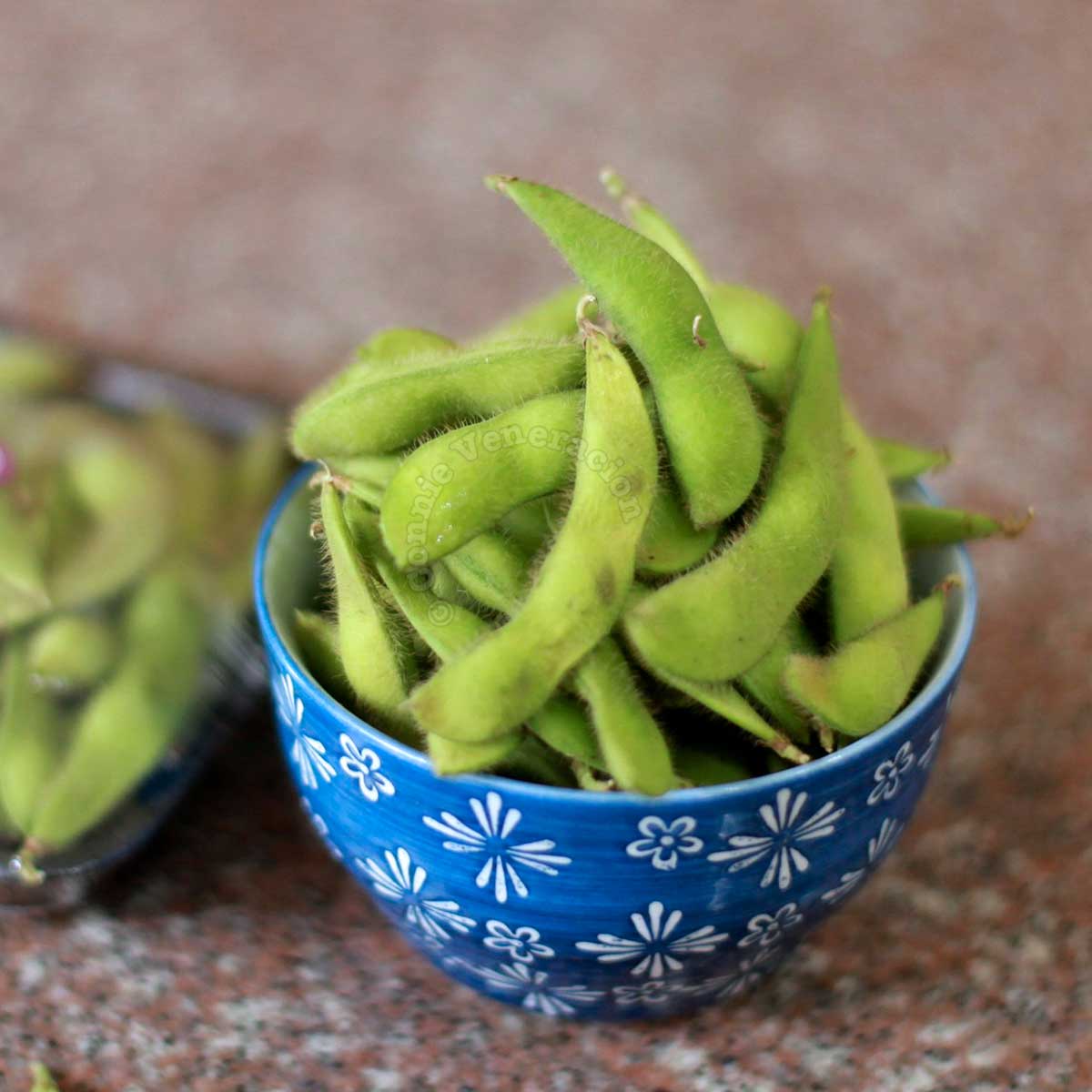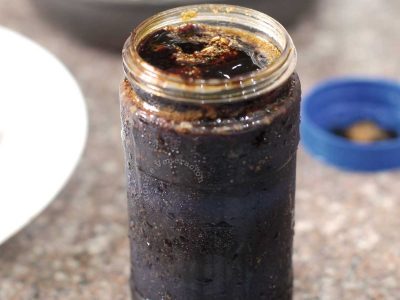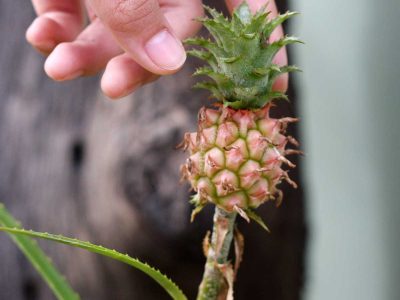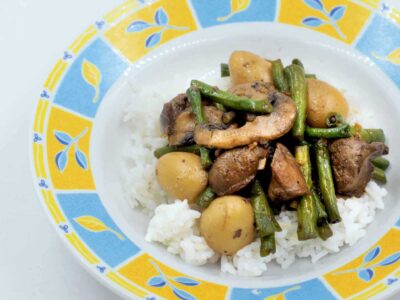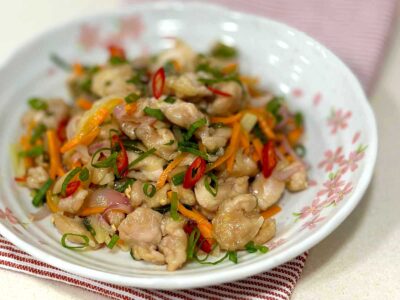Soy sauce is produced by fermenting soy beans with salt and water. Soy milk is the result of grinding dried soy beans that had been soaked in water. Tofu is coagulated soy milk.
Edamame is the Japanese name for fresh and tender soy beans in the pod and, in some cases, the name for a variety of dishes made with them.
These are fresh soy beans in pods. They look like fat pea pods but probably their most distinctive feature is the hair covering the pods. The pods can be eaten whole. Or, if the hairs bother you, you can press them to release the beans and eat the beans after discarding the pods.
It doesn’t take long to cook edamame. Six minutes are usually enough although the cooking time depends a lot on how young or how mature the pods are. The more mature, the longer the cooking time. Boiling or steaming are the most common methods of cooking edamame. I prefer the microwave (thank you, Alton Brown!).
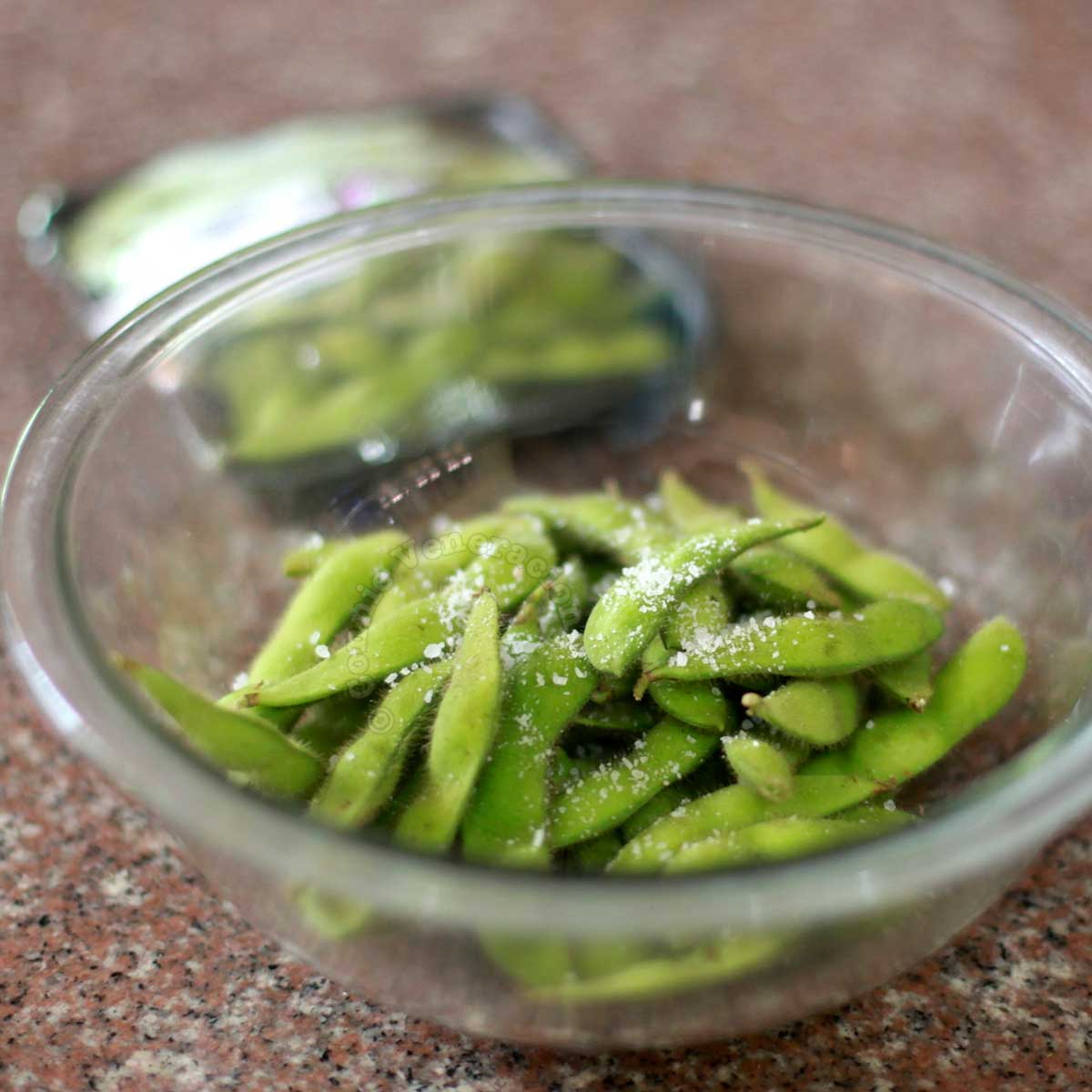
To cook edamame in the microwave, rinse the edamame very well then place in a microwave safe bowl. For 150 grams of edamame, I added about half a cup of water and a generous pinch of salt. I cooked them on HIGH for six minutes. I recommend that after six minutes, take a pod, eat it and if it appears that it will benefit from longer cooking, put them bowl back in the microwave and cook for another minute or two.
Drain the edamame and immediately dump into a bowl of iced water. Two reasons: to immediately stop the cooking and for the pods to retain their fresh greenness. The latter may be more significant if you intent to serve and eat the edamame whole, pods and all. Drain the edamame and serve or take out the beans from the pods.
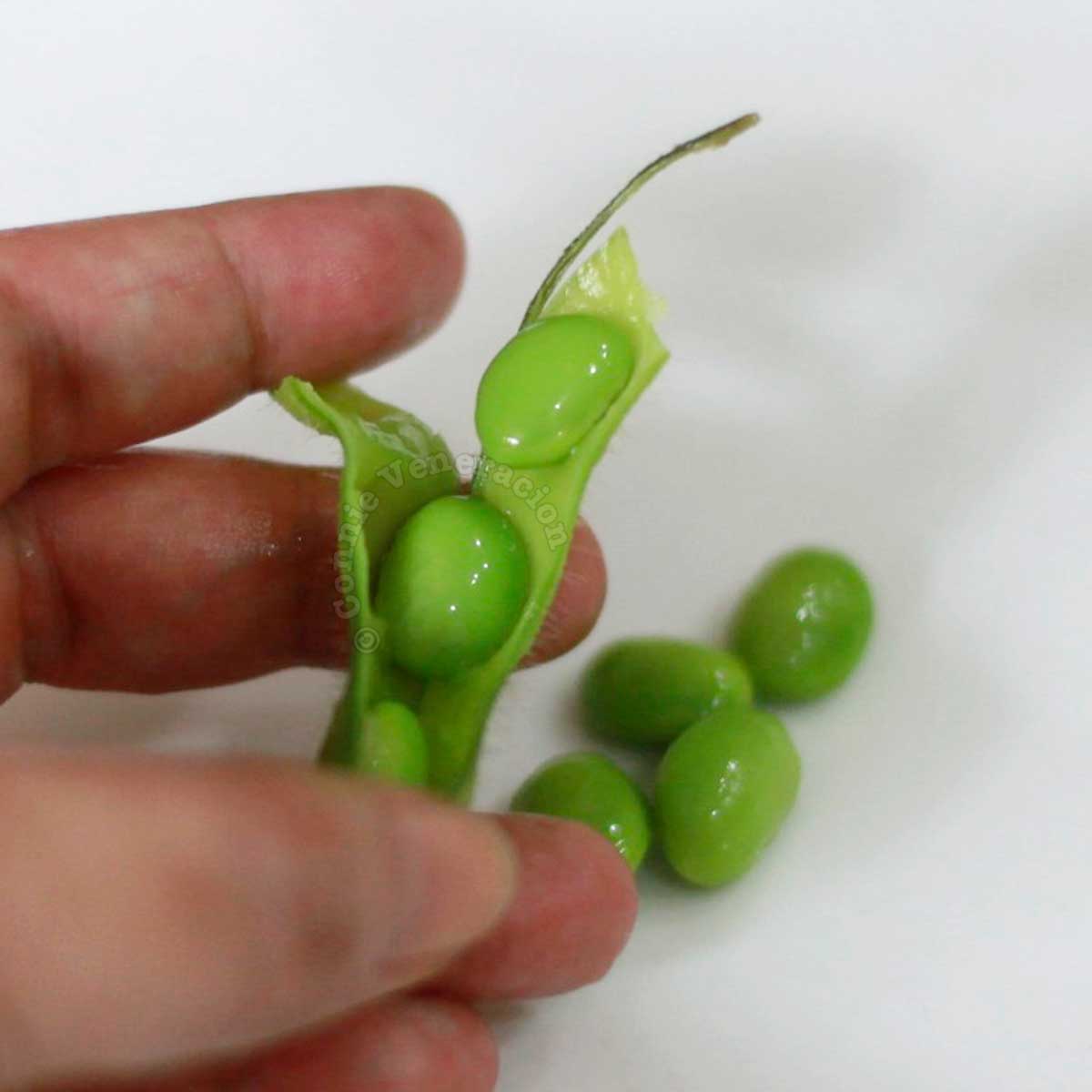
After sufficient cooking, the pods are soft enough that when pressed, they pop open. If you’re not very adept at this method, you can snip off the top of the pods and string them like you would pea pods to open the pods.
You’ll find anywhere from one to four beans inside each pod. After you have taken out all the beans, you can discard the pods (or feed them to vegetable-eating pets like guinea pigs) and use the soy beans in whatever dish you want to include them.

